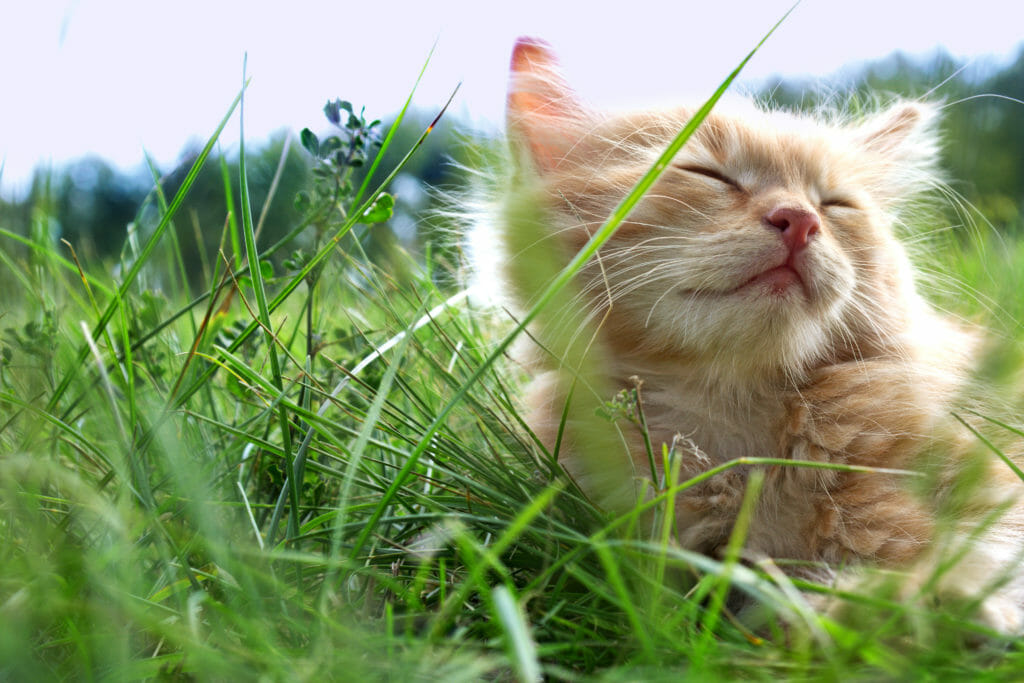
Cat Dental Care
The most common disease to afflict our pets is oral disease, with 85% of animals over the age of two being affected. The most common symptom noticed at home is halitosis (bad breath), but likely means there is more going on – such as gingivitis (red gums), infection, mobile teeth, and/or tooth root abscesses. Your pet may only display subtle symptoms, such as mild lethargy, decreased energy level or willingness to play, chewing on one side of the mouth, dropping food, eating their food slower than usual or avoiding dry kibble when they used to eat it willingly. If your pet is showing any of the above symptoms, he/she should be examined by a veterinarian. We offer a wide range of dental care for your pet, to help them live a long and happy life!
What is involved in a dental cleaning procedure?
Pre-surgical bloodwork is done prior to a dental cleaning. Ideally, it is done the morning of the procedure, before the animal undergoes anesthetic. Pre-surgical blood work is important as dental disease can affect vital internal organs. Bacteria and infection can travel from the mouth through the bloodstream and affect these organs. The kidneys and liver are what filter anesthetic from your pet’s system, so we need to ensure that they are able to tolerate it. Any patient that is to undergo a dental cleaning has to be placed under full anesthetic. This is necessary as it immobilizes your cat and allows the Doctor to do a thorough examination of the mouth and teeth. Anesthetic is also a form of pain control and it gives Doctors the opportunity to clean below the gum line. Before a cat is sedated and placed under anesthetic, a small spot on either front leg is shaved and an IV Catheter is placed. This is how IV Fluids will be administered throughout the procedure and during recovery. An IV Catheter also gives a Doctor access to a vein, so if for any reason a medication needs to be administered immediately it can be given this way directly. A technician will remove tartar and plaque build-up by scaling the teeth with various tools. Once all the teeth are individually cleaned, they are polished. Polishing the teeth help protect and prevent accumulation of plaque build-up. If there are any teeth that are affected by cavities they would need to be removed. A doctor would carefully extract the entire tooth and the roots. Dissolvable suture material would be used to close the open gap in the gums where to tooth used to be. If your cat happens to have any teeth extracted they would require a no-fee follow up within 10-14 days after the procedure to ensure that surgical sites are healing well.
What are signs of dental problems in cats?
Often, we do not see cats show signs of dental problems until the issues have reached advanced stages. Some signs to look for is decreased appetite, difficulties in eating, weight loss, moderate to severe mouth odour, drooling and lethargy.
Are some breeds more susceptible than others?
Yes. Brachycephalic cat breeds like Burmese, Himalayan and Persians are more susceptible to having dental problems. Due to the shorter bones in the face and nose, there is less room for the teeth to be spaced out. Teeth that are overcrowded are prone to more tartar build-up.
What is feline tooth resorption?
Feline Tooth Resorption is a common dental issue found in cats. More than half of cats over the age of 3 have at least one tooth affected by Resorption. It usually starts at the gum line and progresses from there. It erodes the dentin which is the part of the tooth that covers the nerve. Lower jaw premolars are mostly prone to Resorption; however, any tooth can be affected. It is not known what causes Resorption, but there are a couple of theories; Autoimmune Disease, Calicivirus and Metabolic Imbalances relating to calcium regulation. Some cats affected by tooth resorption show signs of pain and jaw spasms when the lesion is touched. Other symptoms can be increased salivation, bleeding or difficulties with eating. The best course of therapy is to extract the entire tooth and roots. X-rays are often used to diagnose and determine what stage and condition a cat’s teeth are in. There are five stages of tooth resorption:
Stage 1: An enamel defect is present and most times the lesion is not as sensitive because it has not entered the dentin yet.
Stage 2: The enamel and dentin are penetrated.
Stage 3: Resorption progresses to the pulp chamber (center of the tooth).
Stage 4: Large amounts of the tooth structure has been destroyed.
Stage 5: Most of the tooth has been resorbed and usually a bump is all that is left and is covered by gum tissue.

